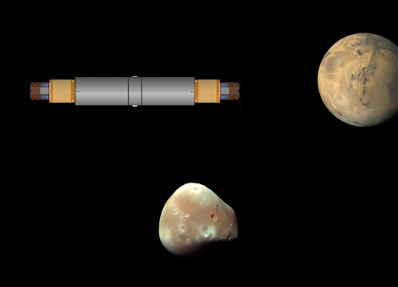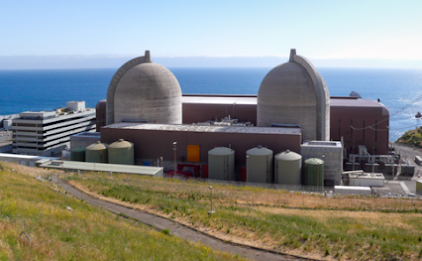Links and References
The online magazine of science, technology, socioeconomics, politics, and the future
by Marcel F. Williams
After Israel wins the war against Hamas in Gaza it must also do what is necessary-- to finally win the peace.
The winners of wars decide the fate of the future geographical territory under their control. And Israel must configure this territory in a way that insures the safety of its citizens while finally giving non Israeli Palestinians an independent geographical state of their own.
Israel needs to annex Gaza. There will never be peace in the Gaza strip as long as Palestinians live there. Polls show that most people in Gaza approved of the Hamas attack on Israel. So non-Israeli Palestinians there will never be good neighbors for Israel. Palestinians need to be relocated to the West Bank territories.
Jewish settlers also need to be removed (nearly 400,000 people) from the West Bank. Resettling in Gaza could be an option for Jews leaving the West Bank territories.
Israel needs to carve out an independent Palestinian state out of West Bank— with no borders with Israel and only borders with Jordan. That would mean returning some West Bank territory to Jordanian control (new Jordanian territory). Jordan already has a significant Palestinian population, so accommodating more in a region where Palestinians already exist shouldn’t be a problem. Israel already has long borders with Jordan and should recognize this West Bank territory as also Jordanian territory making Jordan fully responsible for any border incidents with Israel.
 |
| Palestine and new Jordanian territory |
Such a geographic configuration would, of course, make all of the city of Jerusalem Israeli territory and its more than 240,000 Palestinian residents— Israeli citizens. As Israeli citizens some of them would be allowed to move to Gaza or anyplace else in Israel-- if they desired.
If Jordan refuses to accept the new Jordanian territory derived from the West Bank then Israel could make that remaining West Bank territory a refuge for Christian Arabs. It is estimated that there are ten to 15 million Christian Arabs in the Middle East. In fact there were more Christians in the Middle East than Jews before Muslims invaded the area nearly 1400 years ago.
Once Israel has established an independent Palestinian state in the West Bank, it needs to apply for NATO membership to ensure that any foreign attack on Israel would also be an attack on all NATO members.
But if NATO is reluctant to add Israel as a member then the US should invite Israel to join an alternate international military alliance consisting of free and democratic states with core members consisting of: the US, UK, Canada, Germany, France, Japan, South Korea, Australia and New Zealand. Such a powerful military alliance might be of interest to nations like Ukraine and Moldova.
 |
| Celera 500L patent illustration (Credit William M. Otto, Otto Aviation Group) |
Performance
Links and References
Otto Celera 500L
The Celera 500L Just May Revolutionize Business Aviation
Future of flying: Introducing the new Otto Celera 500L aircraft
World's most efficient passenger plane gets hydrogen powertrain
Utilizing Renewable Methanol to Power Electric Commuter Aircraft
Notional spinning artificial gravity producing AGH 1500 orbiting 600 km above the Earth's surface. Rectractable solar arrays and radiators produce power and regulate temperatures for the twin habitats.
by Marcel F. Williams
Microgravity environments are inherently deleterious to human health in space.
 |
| Notional 10 meter in diameter AGH 1500 in launch configuration on top of the SLS compared an SLS vehicle with an EUS and 10 meter in diameter payload faring. |
 |
| AGH 1500 both contracted for trajectory burns and expanded to rotate producing 0.5g of simulated gravity |
 |
| SLS EUS (Exploration Upper Stage) next to a notional EUS derived ROTV 100 (Reusable Orbital Transfer Vehicle +100 tonnes of propellant) |
 |
| AGH 1500 being deployed to a low Earth orbit 600 km above the Earth's surface by an EUS derivied reusable ROTV-100 |
 |
| Twin ROTV 100 orbital transfer vehicles deploy an AGH 1500 from lunar orbit to a high Mars orbit beyond the orbit of the martian moon, Deimos |
 |
| Latest configuration of EUS for the Space Launch System (Credit: NASA, Boeing) |
by Marcel F. Williams
Boeing's development of the EUS (Exploration Upper Stage) for the Space Launch Systems super heavy lift configuration (Core stage/2 SRBs, EUS) should also enable the SLS to be deployed as a simpler two stage rocket.
 |
| SLS Block I and Block IB (Credit: NASA) |
The SLS core stage plus and EUS upper stage should be capable of deploying more than 30 tonnes of payload to low Earth orbit. In this article, I refer to this SLS variant as the SLS-C.
 |
| Notional SLS-C (SLS core stage plus EUS upper stage) capable of deploying a CST-100 crew module plus nearly 17 tonnes of payload or more than 30 tonnes of payload to LEO (After NASA/Boeing). |
Utilizing the SLS-C as a much more frequently launched crew launch vehicle could significantly reduce the cost of its super heavy lift variant. The SLS-C would also be more environmentally friendly since it won't produce the CO2 and the black carbon (soot) created by hydrocarbon fueled rockets (methane and RP-1). Black carbon is also deleterious to the Earth's ozone layer.
Deploying Boeing's crewed CST-100 Starliner would allow the SLS-C to deploy the 13 tonne spacecraft with nearly 17 tonnes of additional payload to LEO. So an SLS-C should be capable of deploying a crew plus satellites to LEO. And since orbiting propellant producing water depots are now being developed by Blue Origin, a crew plus nearly 17 tonnes of water could also be deployed to LEO. The SLS-C could also be routinely used to deploy 30 tonnes of water to orbiting space stations or propellant manufacturing water depots at LEO.
But if commercial space stations are deployed to LEO then the EUS upper stages could be retrofitted for other commercial purposes. This could be done by astronauts or by robots teleoperated from the Earth's surface or by astronauts and robots working together in space.
 |
| Flexcraft could be crewed or teleoperated from Earth to retrofit spent SLS core stages or spent EUS upper stages for a variety of commercial uses (Credit NASA). |
The EUS hydrogen tank in particular will be 8.4 meters in diameter and 7.5 meters tall. And such a substantially spacious tank could be used for a large variety of commercial purposes that could allow-- each spent EUS-- to generate hundreds of millions of dollars in savings annually.
 |
| X-ray of the EUS showing the large 8.4 meter in diameter hydrogen tank and the small oxygen tank (Credit NASA/Boeing). |
An EUS retrofitted near a commercial space station with airlocks, pump connectors, or solar powered cryocoolers could be used for:
Water storage: Both the spent hydrogen and oxygen tanks of the EUS could be modified to store nearly 300 tonnes of water. Water can be used by commercial space stations for drinking, food processing, the the production of air, and to enhance radiation shielding. Propellant depots can convert water into hydrogen and oxygen propellant for spacecraft destined for beyond LEO cis-lunar and interplanetary missions.
Large habitat module: Retrofitted with an airlock, the empty hydrogen
tank could be pressurized and attached to a small or large habitat, adding a huge amount of additional habitat area: 7.5 meters high and 8.4 meters in diameter. Such a substantial increase in space could be used for
microgravity recreation or used to add three or four 2.5 meter high habitat levels.
Sewage storage: Waste water from commercial space stations can be stored and later reprocessed into potable water.
LOX storage: During the production of LOX/LH2 propellant through electrolysis at an orbiting depot, 25% of the oxygen is wasted. Retrofitted with a pump connectors and cryocooler, the spent EUS hydrogen tank could be used to store more than 200 tonnes of excess oxygen saving more than a billion dollars in additional launch cost from Earth.
Micogravity lettuce farm: a large variety of edible lettuce can be grown under microgravity conditions. A spent EUS would allow substantially more area for growing food.
Microgravity Mushroom farms: mushrooms can be grown in microgravity and when exposed to UV light than can be enriched with vitamin D. Growing mushrooms within spacious EUS hydrogen tank could help to reduce the cost of shipping food from the Earth's surface.
Artificial gravity aquaculture: attached to two thruster modules, the EUS hydrogen tank could be filled with water or seawater and used to raise brine shrimp, fish, or oysters.
Micrometeorite and radiation shielding: A spent US transferred to the lunar gateway or other cis-lunar Lagrange point areas for utilization could still have value after its no longer used for habitats, water, sewage, or oxygen storage. If the EUS is simply crushed and grounded up into fragments by solar powered machines in orbit, the high density fragments could be used to enhance the radiation shielding for habitats beyond the Earth's magnetosphere while also enhancing micrometeorite protection.
Links and References
 | ||
| Crew of the Artemis II: Christina Hammock (left), Victor Glover (top), Reid Wiseman (bottom), and Jeremy Hansen (right) (Credit: NASA) |
Links and References
 |
| Diablo Canyon Nuclear Power Plant - San Luis Obispo County, California |
As California continues its attempt to keep its carbon neutral nuclear power plants operating at Diablo Canyon, its essential that the state prioritize and focus on transitioning from a fossil fuel economy to a-- carbon neutral methanol economy-- using nuclear, solar, wind, hydroelectricity, and bio-waste.
California's natural gas electric power plants (more than 50% of in state electricity production) can be quickly retrofitted to use renewable methanol. Methanol electric power facilities should be coupled with small solar farms to reduce methanol fuel demand during daytime hours. Methanol/solar micro-grids can be quickly deployed practically anywhere in the state without the need for fire hazardous long distance power lines.
Carbon neutral sources of methanol can come from urban sewage and agricultural animal waste. Carbon neutral sources of CO2 can produce substantially more methanol when synthesized with hydrogen.
Carbon neutral sources of CO2 can come from the flu gases of methanol electric power plants and from the flu gases of bio-waste power plants that burn: urban garbage, agricultural crop waste, and the fire hazardous dead trees and fire hazardous foliage from forest.
Carbon neutral sources of hydrogen can come from California's nuclear, solar, hydroelectric, geothermal and wind generation. Electricity production at Diablo Canyon should be-- quadrupled -- using newly licensed passively safe small nuclear reactors to produced hydrogen for methanol production.
Carbon neutral methanol can also be used as a marine fuel for retrofitted sea vessels. Methanol can also be converted into carbon neutral: gasoline, jet fuel, and dimethyl ether (diesel fuel substitute).
Links and References
California Energy Commission: 2021 Total System Electric Generation
Methanol Institute: Power Generation
ExxonMobil developing methano-to-jet SAF technology
Links and References
Powered by hydrogen: Experimental plane revs up for testing in Central Washington
Universal Hydrogen Regional Aircraft Types
Links and References
How Japan Avoided the Global Housing Crisis

